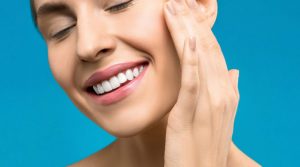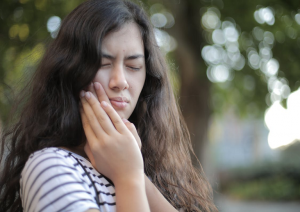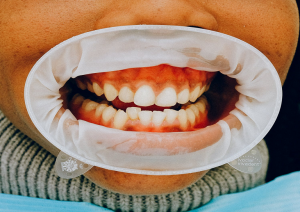Have you ever felt insecure about smiling due to tooth discolouration? There are numerous methods for removing teeth stains and preventing them from occurring in the first place. Here are a few pointers to help you keep your smile healthy and camera-ready!
We are constantly bombarded with images of pearly whites from the media day in, day out, to the extent that the global teeth whitening market was valued at USD 6,140.75 million in 2020 and is predicted to accumulate a net worth of USD 8,207.2 million by 2026.
As such, tooth discolouration is often associated with a sense of embarrassment. We would like to inform you that the darkening of your teeth could be a part of ageing—in other words, it can be out of your control.
We tend to find more faults in our oral condition with age. For example, the darkening of our teeth occurs as a natural effect of ageing. As we get older, the outer hard tissue covering our teeth, called enamel, wears away and exposes the darker dentin beneath it. This can cause our teeth to appear more grey or yellow rather than white.
However, the good news is that there are an array of solutions to reverse teeth stains, which means you still have a fair shot at achieving a smile that will boost your confidence at any age. Before we dive into these solutions, it is important for us to understand specific lifestyle choices that reduce the quality of our teeth, as these are factors that are within our control.
4 Lifestyle choices that darken your teeth
 1) Food and drinks
1) Food and drinks
The consumption of tea is often attached to a variety of health benefits that improve our daily functions. However, high consumptions of brew, especially the basic black variety, can produce more stains than coffee. Both tea and coffee contain coloured pigments and are also mild to moderately acidic. Both factors contribute to the staining of teeth.
Tomato-based sauces and curry are also a key offender to teeth stains. While tomatoes and curry are a great source of nutrition, the pigments that are responsible for their rich colour can deteriorate the colour of our teeth.
2) Tobacco use
Your teeth have pores that are vulnerable to the tar and tobacco that is found in nicotine. Although nicotine is colourless on its own, when combined with oxygen, it turns yellow. This means that even nicotine-infused “e-juice” from electronic cigarettes can stain your teeth. Smokers’ teeth often become darker than others as a result of their inhalation method.
In regards to chewing tobacco, the brown tobacco that is in contact with saliva which often rests on the teeth for a long period of time will result in a dark liquid that is detrimental to the natural colour of our teeth.
 3) Poor dental care
3) Poor dental care
A lack of frequent brushing and flossing can lead to the accumulation of plaque and food stains. Skipping professional dental cleanings and poor methods of cleaning can also lead to the formation of stains. Long term use of mouthwashes containing chlorhexidine can also cause staining of teeth.
4) Medicine
Certain drugs have a long history of discolouring teeth in growing children. Tetracycline and doxycycline antibiotics can have an effect on enamel formation for children under the age of 8. Antihistamines (such as Benadryl), antipsychotic medications, and antihypertensive medications can all cause deep stains.
How to amend discolouration on your teeth
 1) Brush with proper technique
1) Brush with proper technique
Brushing properly takes at least two minutes—that is 120 seconds! Most adults do not brush their teeth for that long. Try using a timer for a start to get a sense of how long you are currently spending on teeth brushing. Brush your teeth gently with short, gentle strokes and pay special attention to the gumline, difficult-to-reach back teeth, and areas around fillings, crowns, or other restorations.
2) Change your diet
You already know that certain teas and sauces can lead to discolouration but essentially, all foods and drinks that come with darker pigments, tannins or high acidic content can lead to extreme stains overtime. It is best to reduce the consumption of these foods and drinks to prevent further staining. Alternatively, you can always brush your teeth after you eat.
 3) Talk to your dentist
3) Talk to your dentist
This a sure-fire way to fix any dental-related issues you are struggling with. Your dentist can help you find the best teeth whitening treatment that is suitable for your current condition, especially for older folks with sensitive teeth. They are able to identify if your stains are extrinsic or intrinsic. Extrinsic stains are visible on the surface of your teeth, which requires mechanical efforts to be removed and intrinsic stains are under the enamel, which requires teeth whitening to be removed.
As you can see, there are a number of lifestyle changes and remedies to combat the natural darkening of your teeth that inevitably comes with age. It is also noteworthy that each person’s teeth will respond differently to each treatment, which is why the support of your dentist matters! Speaking of the dentist, if you are due for a dental checkup, book an appointment with us!
Have an interesting topic you would like us to cover? Just let us know!
References:
1. Brushing teeth – proper techniques for brushing your teeth. (n.d.). Retrieved March 30, 2021, from
https://www.colgate.com/en-my/oral-health/brushing-and-flossing/how-tobrush
2. Person. (2020, December 11). Foods that Stain Teeth: 9 Tooth-Staining foods and drinks. Retrieved March 30, 2021, from
https://www.healthline.com/health/foods-thatstain-teeth#:~:text=The%20bottom%20line,keep%20your%20teeth%20looking%20good.


 1) Food and drinks
1) Food and drinks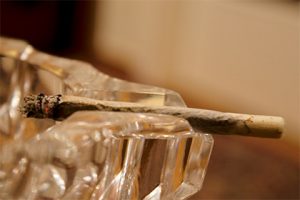
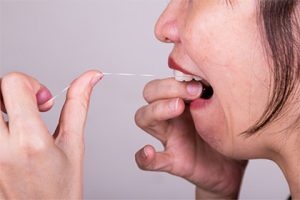 3) Poor dental care
3) Poor dental care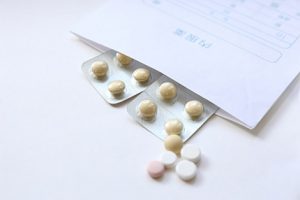
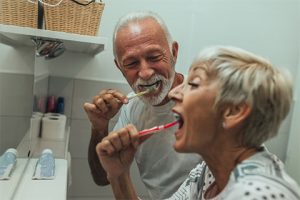 1) Brush with proper technique
1) Brush with proper technique
 3) Talk to your dentist
3) Talk to your dentist